By Helen Figueira
December 20, 2016
Time to read: 11 minutes
By Deborah Oakley
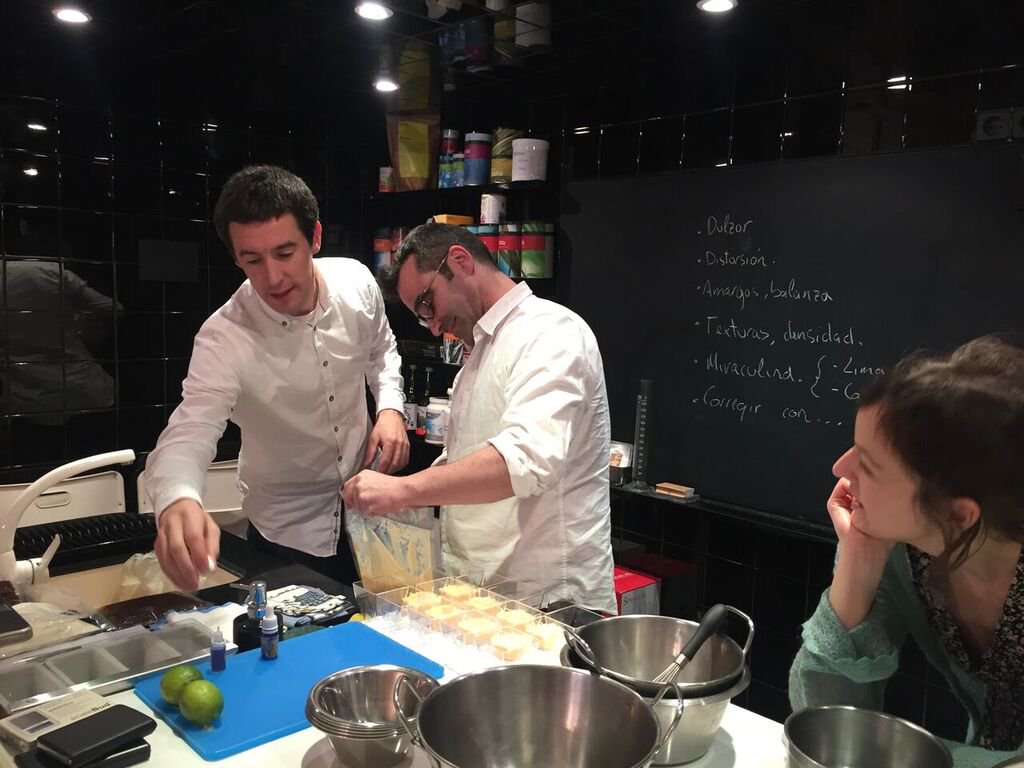
It wasn’t quite the response I’d expected from one of the world’s top chefs: “I’m an experimental psychologist. We get an emotional response from food,” Heston Blumenthal told me as we took a break from this most unusual gathering of celebrity chefs and leading neuroscientists, on a quest to explore the brain biology that underpins our experience of food and eating.
Blumenthal went on to describe how in his view we ‘feel’ our emotions in our gut, and that he wants to understand more about how our gut and our brain communicate, along what’s known as the ‘gut-brain axis’.
The co-organiser of the Brainy Tongue workshop was Irene Miguel-Aliaga, who leads the Gut Signalling and Metabolism group at the MRC Clinical Sciences Centre* here in London. The gut-brain axis is a central component of her research. She uses fruit flies as a model to better understand metabolism, and is exploring the significance of the nerves that extend from the fly’s brain to its gut.
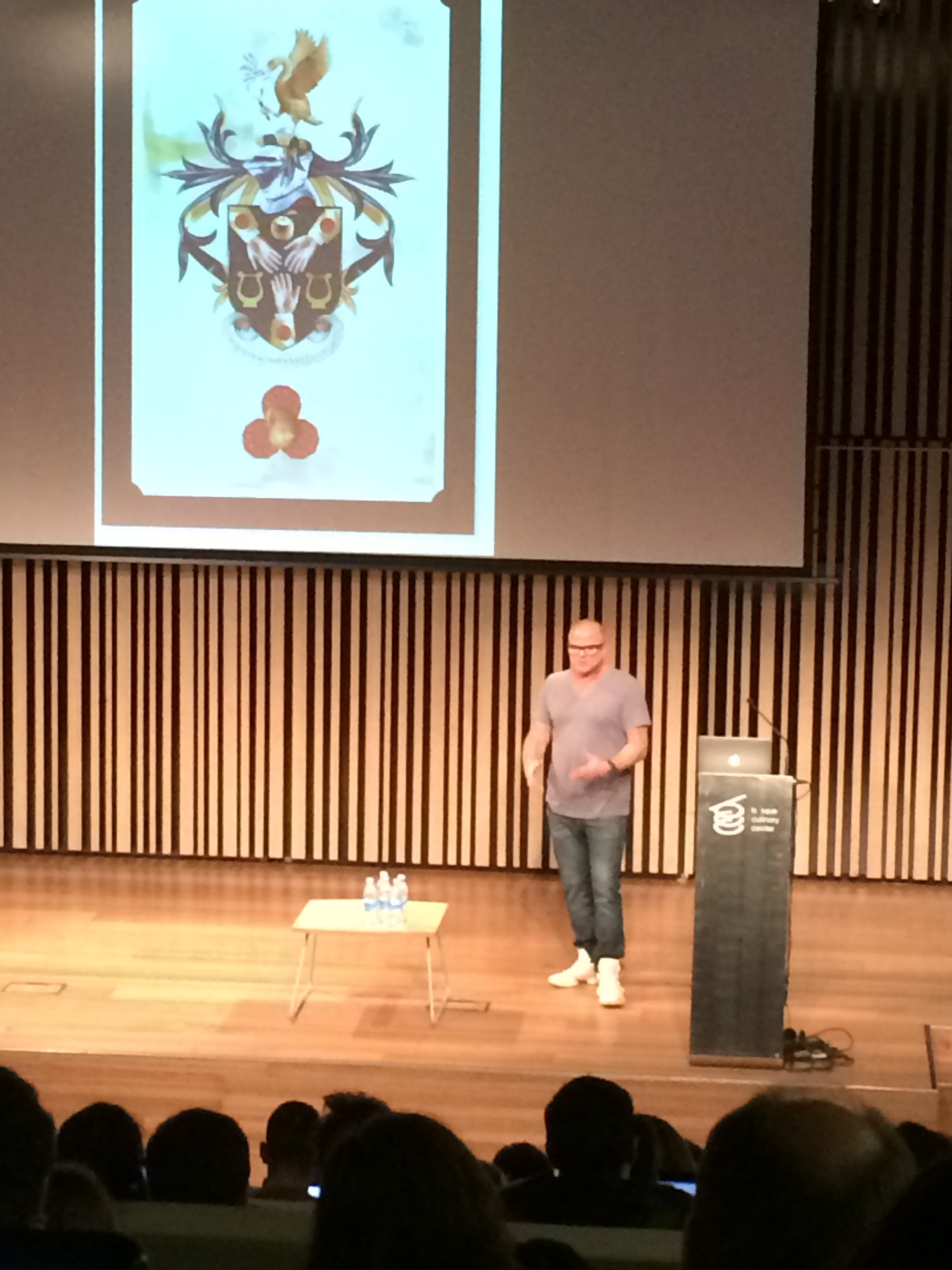
Heston is hooked. Before the conference, he’d visited Miguel-Aliaga’s laboratory and was clearly intrigued. “I think it’d be great to have a structured period of development where we work together, I think there’d be loads of things we could do. I could see our two teams would be bouncing ideas off each other left, right and centre.”
Blumenthal believes science is missing a key piece of the puzzle. “All the work has been done on the gut-brain axis. But in fact, none of us has looked at… I don’t know what to call it yet, the imaginative gut-brain axis.” He said we feel fear, joy and nerves in our gut, and continued, “If you imagine biting into a lemon, you can almost feel your tongue salivating. That’s the beauty of imagination. I think what’s happened is your imagination has communicated with your gut and your gut has responded, so there’s this two way conversation.”
Blumenthal’s unconstrained thought processes were evident when I interviewed him in this quiet moment away from the bustle of the conference. In the library of the Basque Culinary Centre, in front of a wall lined with recipe books, Blumenthal swung back on the hind legs of his chair, intermittently hugging the leather bag on his lap and glancing around the room as we talked. He ranged from the evolution of the brain, to the theory of consciousness, to mouthwash and the importance of gut bacteria. It was clear that he sees himself as much more than a chef.
Speaking at the conference, Blumenthal gave the audience an insight into his own creativity. He said he has colour and letter synaesthesia, which means he sees letters in colour and that, in his mind, colours can take on the form of letters. He talked passionately about how our different senses combine to give a multisensory experience of reality. Blumenthal is renowned for crafting dishes that play with diner’s senses and challenge their expectations, such as bacon and egg ice cream. This is a signature dish of his restaurant, The Fat Duck, which was awarded three Michelin stars in October, after a full recovery from a severe bout of food poisoning in 2009. His latest dishes are a multisensory experience designed to trigger childhood memories. The menu uses lighting, personalised sound tracks and flavours with the aim of inducing nostalgic memories of childhood holidays.
Reflecting on the role of food in health, Blumenthal said, “No diet has ever considered that our sense of happiness or contentedness and awareness, those sorts of things, can actually heavily affect our diet.” He says that diet has been boiled down to fat, protein and carbohydrate components. “For years we thought fat was bad, now sugar’s the devil.” For him, food is much more than its chemical components.
He first became interested in the science of food when he discovered that browning meat doesn’t keep the juices in. This led to his trademark experimental approach and today he’s named as one of the Royal Society of Chemistry’s 175 Faces of Chemistry. “The most important thing is to question everything, because the opposite of questioning everything is questioning nothing. I don’t know about you, but I would think to question nothing in your life is not a human existence,” said Blumenthal. “It’s so important, for creativity in science, in academia and research.”
From a scientist’s point of view, the value of creativity is something that Miguel-Aliaga wouldn’t dispute. She drew on ideas from research in mice and flies, in her own work and that of others, to develop taste experiments for conference attendees. One used breadsticks containing the same concentration of salt, but varying levels of fat and sugar. Reflecting on the informal results, Miguel-Aliaga said, “If you make food very rich or very sweet, that can mask how much salt you have. That obviously has health relevance, because people just don’t realise that they’re eating it.”
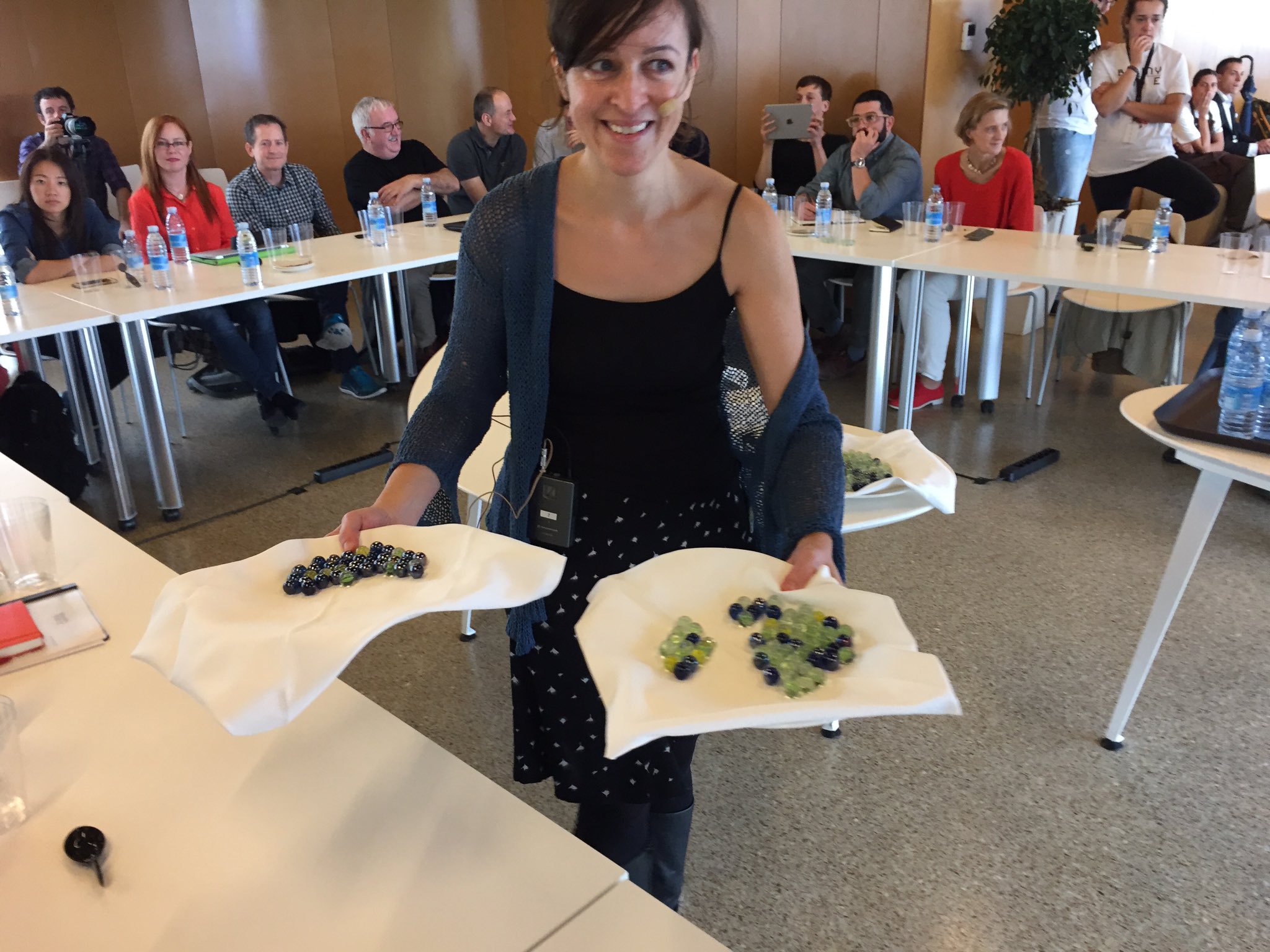
Using flavoured jellies, Miguel-Aliaga also showed that a sweet taste immediately makes people want bitter food, and a bitter taste makes them want sweet. This is called ‘sensory satiety’, and may explain why, after eating a savoury meal, we feel full but can still make room for desert. Whilst this has been recognised before, it’s not been completely understood.
Chef Dani Lasa, who led a workshop on technology and the future of food, said, “One of the most challenging and funny things in this workshop, is that we were the models on which we tested the experiments.” Miguel-Aliaga brought her flies along too. “We explored the tastes of different amino acids, the building blocks of proteins. We found some that taste sweet, and some that taste bitter,” she said, and explained that she’d given people and flies a choice of the same two amino acids. “Both flies and us made the same choices.”
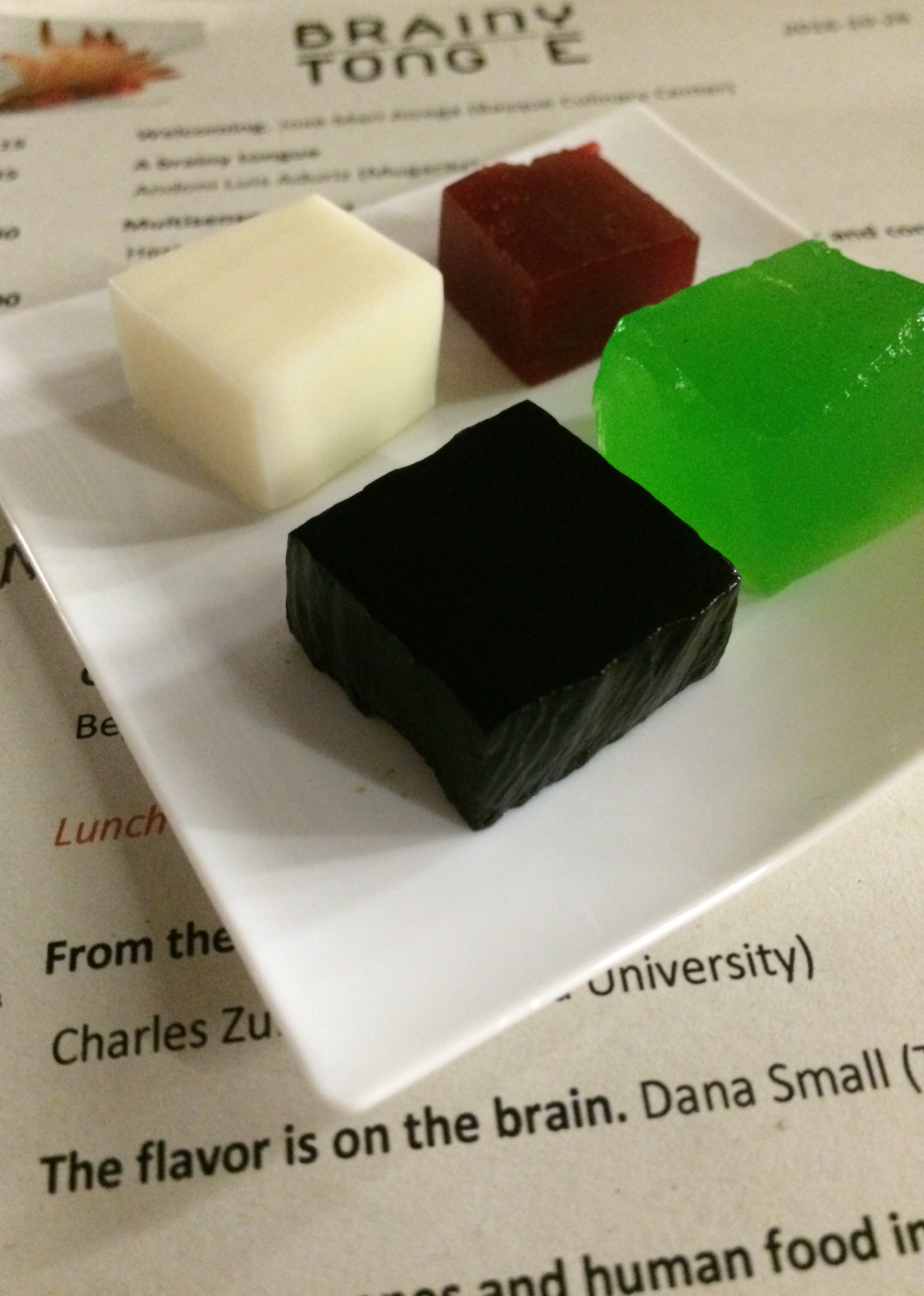
Miguel-Aliaga pointed out that the experiments were not designed to be conclusive, rather to help create a space for future dialogue, where the contributions of chefs and scientists would both be equally valuable.
The experiments were followed by scientific talks. Charles Zuker from Columbia University told the meeting that he’s developing a ‘gastronomic map’ of the brain. Zuker’s research has shown that in mice different brain regions are activated by bitter, salty, sour and sweet tastes. When he injected sugar directly into a mouse’s gut, the sugar-detecting brain region was activated, suggesting gut to brain communication.
Zuker has also used a technique called optogenetics to activate this sugar-detecting brain region and confirm its role. He did this by shining a blue laser onto the brain. When he activated the region at the same time as a mouse drank plain water, he triggered the rodent to respond as if it’s drinking not just plain water, but an enticing sugary drink. Zuker said he can “transform water into sugar, by activating lasers”.
In his view, the capacity of the brain is almost too vast to understand, but that scientists are making great progress. “We’re at the beginning of a magical journey into the unknown. A path into memory, thoughts, emotions.”
Other talks included Dana Small of Yale University, who explored how the brain decodes flavour, and how the sense of touch in the mouth can capture tastes and smells. Adrian Cheok of City University London demonstrated a prototype machine that uses electricity to stimulate taste, and Stephen O’Rahilly of the University of Cambridge said we must change our narrative on obesity to better recognise the key role that our genes play in determining our body shape and size throughout our lives.
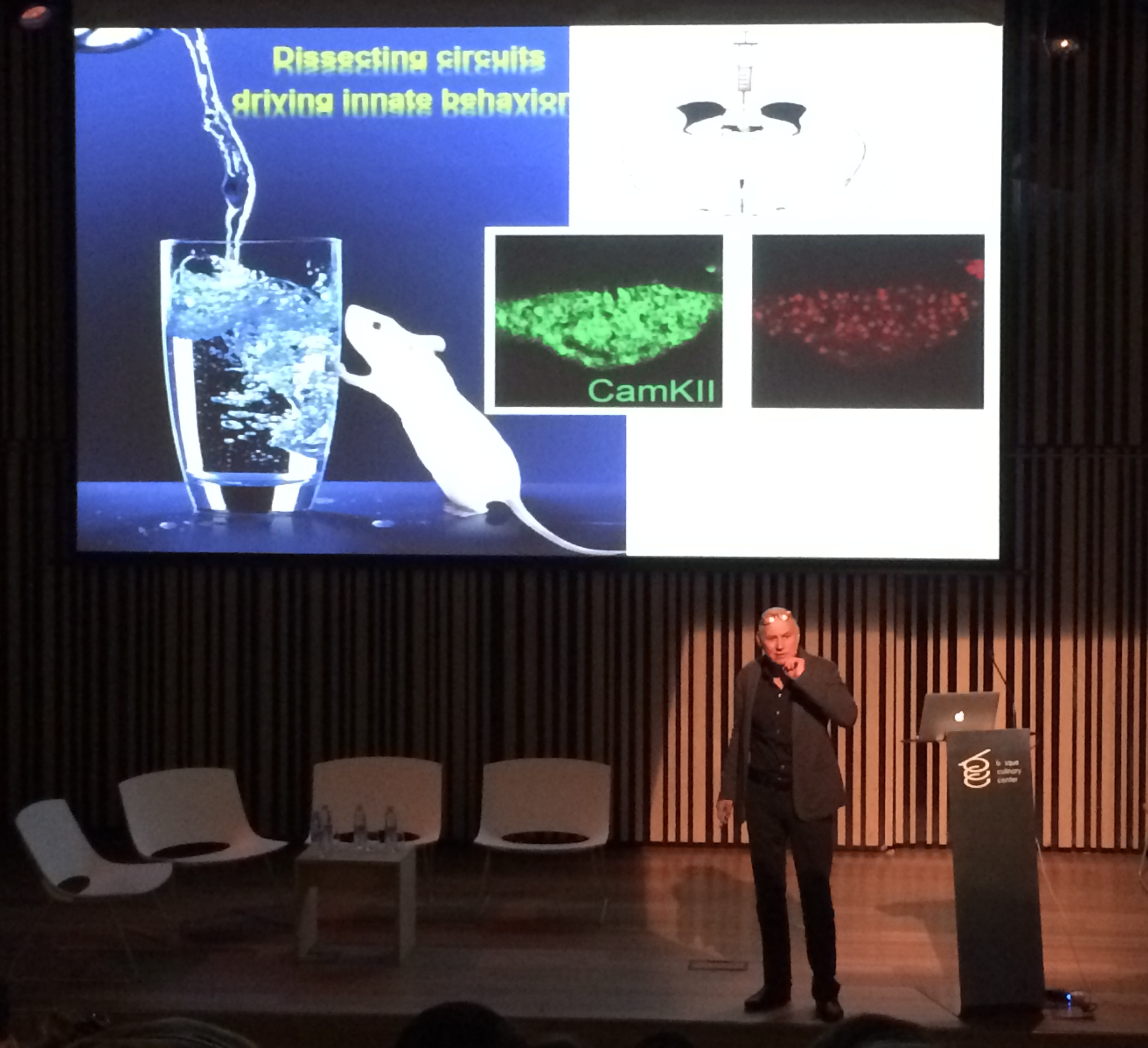
Another chef with a passion for science is Andoni Luis Aduriz. He helped to spark the idea for the Brainy Tongue conference when he visited the Centre for Regulatory Genomics (CRG) in Barcelona. At the CRG, he was introduced to Matthieu Louis who, like Irene Miguel-Aliaga, also works with flies and co-organised Brainy Tongue. Andoni was immediately fascinated by his research on how fruit flies detect odours. Speaking at the conference, Aduriz said, “Science has a mechanism to change reality. You anticipate what you’re going to find from what you already know.”
Aduriz said he turns to scientists to help him to develop twists for classic dishes. “We have a macaroon. How do we manage to modify it through science?” he asked. He explained how his team identified that the protein albumin is the component of eggs whites that gives macaroons their characteristic structure. Albumin is also found in blood, and Aduriz now replaces eggs with blood albumin. But some neuroscientists who sampled the novel macaroons at the workshop were “horrified” by the concept, according to Aduriz.
He also revealed his playful side. “Could we make a dish to be like vanity? Beautiful, golden and shiny.” He has spent over a year experimenting with texture and surface tension to craft edible golden bubbles that look solid but are actually empty and crumble when touched.

Science is already proving that fine dining is about more than just food. Aduriz and other chefs at Brainy Tongue discussed research on how the size and colour of a plate can influence taste and appetite. Charles Spence from the University of Oxford talked about previous studies which have shown that the colour of a plate affects the perceived sweetness of strawberry ice cream. He mentioned another study which has shown that patients in hospitals eat around a third more food when it’s served on blue plates. This knowledge could help the elderly and cancer patients who often loose their appetites and become malnourished.
“It’s really nice to meet people from the science world. Academia is a bit like chefs. There are some chefs who think food is right or wrong, and if you don’t do it like this then it can’t possibly be correct, and they’re completely compartmentalised. And you have other chefs who are more freethinking, and think outside the box,” said Blumenthal.
Read the BBC report on the conference here.
* The MRC London Institute of Medical Sciences is the new name for the MRC Clinical Sciences Centre.
For more further information contact
Deborah Oakley
Science Communications Officer
MRC London Institute of Medical Sciences
Du Cane Road
London W12 0NN
M: 07711 016942
T: 0208 383 3791
E:
T: @MRC_LMS
On a cold evening in late October, an unusual group huddled into a cider bar in the Basque Country of Northern Spain. It’s a region known for rolling hills, rocky coves and creative yet traditional cuisine. Serving the first course was local chef Andoni Luis Aduriz, head of the Mugaritz restaurant, which ranked seventh in the world this year. He sliced thin strips of cured meat from the hoofed leg of a rare Spanish pig. Cod, anchovies and thick beefsteak followed, finished with walnuts cracked by hand. Between courses, the diners queued up for cider that splashed into their glasses from tiny taps set into enormous, ceiling-high wooden barrels. The conversation focused on food, but with a twist.
Neuroscientists, dieticians and chefs were gathered for a workshop called Brainy Tongue, a pioneering event that drew together the parallel worlds of neuroscience and gastronomy. Held at the Basque Culinary Centre, it created a platform to share ideas and foster tentative collaborations. Its unique format included interactive experiments on how our senses, imagination and expectations all shape our individual experiences of food.